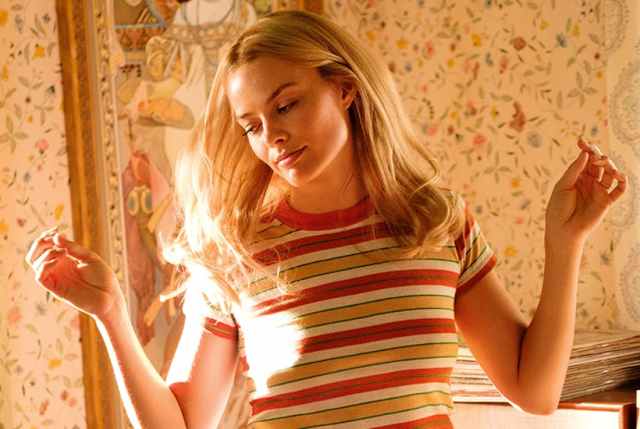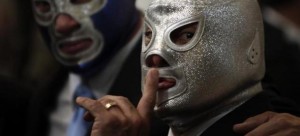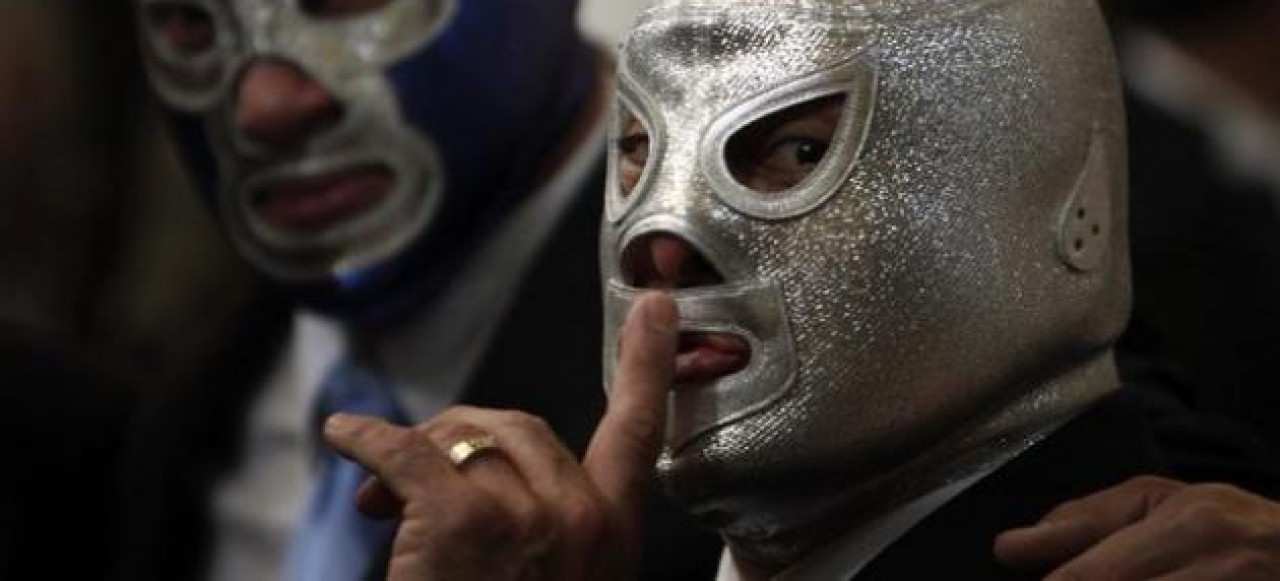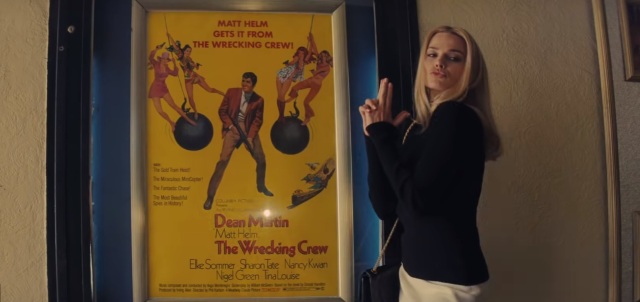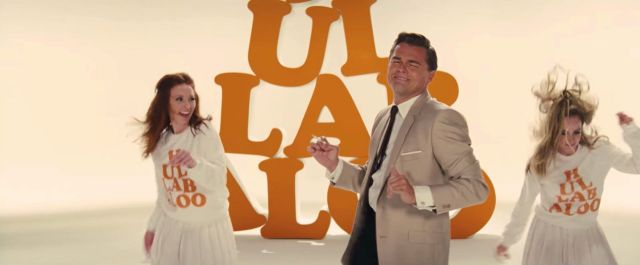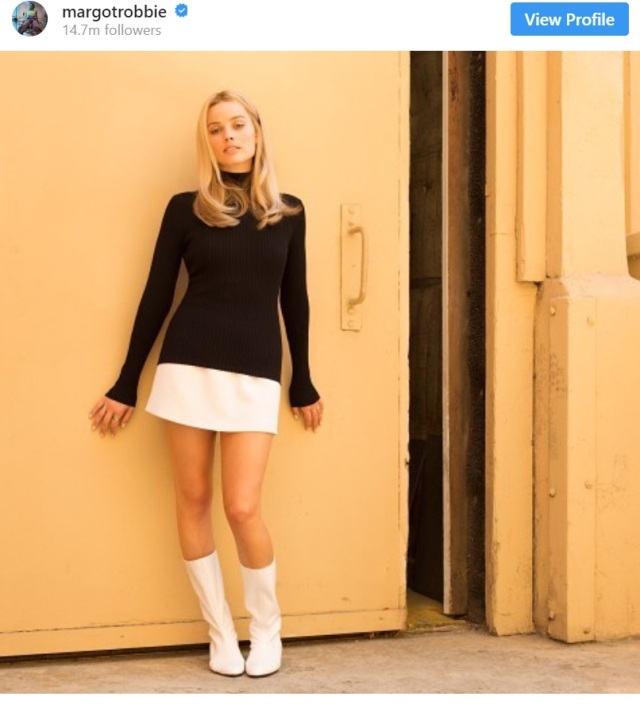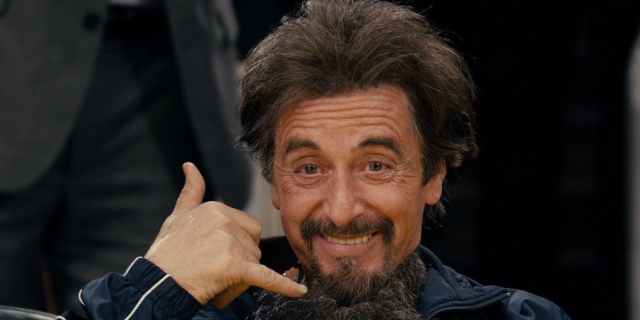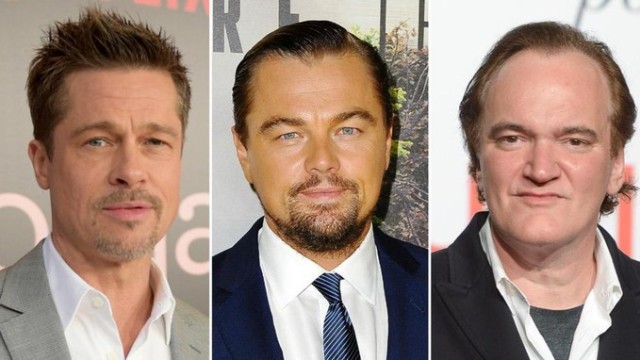
Out Of Dave’s Head is proud to publish our first article by another writer; welcome aboard Jon Harman, celebrating the release of Once Upon A Time In Hollywood with a look at the cinematic legacy of the real-life horror haunting the movie.
Charles Manson has been a defining Hollywood story for 50 years, ever since the fateful and brutal killings in August 1969. With Tarantino returning to this arena in his latest offering Once Upon a Time in Hollywood, we look at the impact and legacy of the Manson Murders in cinema.
The Manson Murders took place in the summer of 1969 and were the culmination of activities by a hippy cult lead by Charles Manson, an unemployed ex-convict who had spent more than half of his life in correctional institutions. Manson’s dreams of becoming a singer/songwriter had been snubbed by Beach Boys record producer Terry Melcher and he was suffering delusions of grandeur that he was the new messiah. He was also obsessed with the Beatles, particularly their 1968 self-titled album, and was allegedly guided by his interpretation of the band’s lyrics. He adopted their song, Helter Skelter, as the text to describe an impending apocalyptic race war.
On August 8th of that year, Manson instructed his followers, Tex Watson, Susan Atkins, Linda Kasabian and Patricia Krenwinkel to go to Melcher’s house in Cielo Drive in LA and murder the inhabitants, who were film director Roman Polanski’s pregnant actress wife, Sharon Tate, her hairdresser Jay Sebring, coffee heiress Abigail Folger and her boyfriend Voytek Frykowski. The following night he instructed them and Leslie Van Houten and Steve Grogan to perform a copycat killing of Leno and Rosemary La Bianca at their residence.
Manson occurred at a defining moment for counter-culture and Hollywood, starting a transition to a post studio system, as Peter Fonda’s Wyatt uttered the immortal words “we blew it” in Easy Rider, the love affair with hippiedom was over, but the kinetic, youthful and independent style of Easy Rider was opening a door to a new cinema. Then on August 8th-9th the brutal slaying of the Tate party in Cielo Drive ensured Hollywood and violence were fused together in a thematic way that has permeated US cinema for decades, with constant reference to the perfect boogeyman in Manson.
There are the biopic, literal tellings of the Manson story over the years, but there are also countless films that channel a Manson theme within. Very early on, numerous exploitation films captured the salacious nature of the crimes like Angel, Angel, Down We Go (1969) which was retitled as Cult of The Damned (1971) to feed off the ever growing notoriety of the case, not to mention the bizarre attempt to add two minutes of footage to Sign of Aquarius (1970) to suddenly make a Mansonesque blaxploitation flick, Ghetto Freaks (1970) which was a fusion of too many themes to comprehend).
As the investigation played out in 69 and 70, aspects were already fusing into the lexicon of cinema, such as John Waters’ Multiple Maniacs (1970), which had Divine running a circus freak show as a front for robbery and murder and convincing her husband that he killed Sharon Tate in a drug induced haze. Waters was obsessed with the case and wrote references into his film as the case unfolded, later dedicating Pink Flamingos (1972) to “Sadie, Katie & Les” (Manson’s nicknames for Susan Atkins, Linda Krenwinkel and Leslie Van Houten, the main perpetrators of the murders). Waters has spent years advocating the release of Van Houten, describing her as his friend.
The first attempt to bring the actual Manson story into cinema was The Other Side of Madness (1971) which itself was later retitled as The Helter Skelter Murders, a strange curational mix of documentary and re-enactment footage filmed in some of the actual locations whilst never actually using any of the names from the crime. The hippie noir depiction of the crime scene is both brutal and exploitative for a film of its time with strong mondo undertones leaving it a curio in the Manson legacy. At the same time, exploitation duo Michael and Roberta Findlay jetted down to Argentina to make The Slaughter (1971) about a Mansonesque death cult resulting in a film with either very limited or no distribution until independent low-budget distributor and sometime producer, Allan Shackleton picked it up and added a notorious murder scene as the finale and calling it Snuff (1976), spawning an entire urban myth strand of modern cinema about the existence of underground snuff films in its own right (which is another whole article by itself).
Likewise in 1971, fledgling writer/ director Wes Craven was typing out his script for what would become The Last House on The Left (1972). Whilst being an American retelling of Bergman’s The Virgin Spring (1960), it had a Manson Family undertone in its brutalism and striking similarities of character with it’s female villain “Sadie,” played by Jeramie Rain, cast just after playing Manson family member Sadie Mae Glutz in the off Broadway Manson musical 22 Years the same year.
The zeitgeist of the Manson Murders was permeating new cinema as much as the raging Vietnam war at the time, which conflated in a later movie. Writer Peter Biskind, in his 1998 book, Easy Riders, Raging Bulls saw Marlon Brando’s Colonel Kurtz in his compound in Apocalypse Now (1980) as:
“another incarnation of Charlie Manson, the scourge figure who had gone native and now, unchallenged, ruled over his family. The compound was his Spahn Ranch”
The sense of crime family, hippies, war and brutality also infused the zeitgeist of Tobe Hooper’s film The Texas Chainsaw Massacre (1974), in particular the opening prologue directly cites Manson prosecutor Vincent Bugliosi’s description of the crimes as “the most bizarre mass murder case in the annals of American crime” to add weight to the false claim the film is a true story.
1976 saw the release of CBS made for television film Helter Skelter, which depicted both the crimes and the trial in detail, based on Bugliosi’s book of the same name. Steve Railsback defined the persona of Manson for the viewing public (though retrospectively, this comes across as being quite histrionic and the film comes off as a weird episode of Perry Mason tonally), to the point he never really escaped its impact and stunting his fledgling acting career. The film reached an estimated 50 million Americans on release and thus defined much of the Manson story. CBS later remade Helter Skelter (2004) with Jeremy Davies playing a more subtle and realistic Manson, though not as eerie, this time the film focused more on the persuasive nature of Manson as guru and the lead up to the crime.
Always lurking in the exploitative realms of cinema, Manson re-emerged in an early found footage piece that built on the earlier legacy of Snuff (1976) and ran with an assertion from Ed Sanders book The Family (1971) that they stole an NBC film crew truck and used the equipment to make snuff films. The imagined output is surreal. Manson Family Movies (1984) which is all filmed from the perspective of the family on super 8mm film and dwells on mondo-style, exploitative gore once again to entice the salacious viewer disturbed by the ever winding myths around Manson.
In the same vein, Jim Van Bebber’s The Manson Family (2003) takes a transgressive view on the subject matter and relishes in the hyperbole of cult and barbaric murder. Famously taking 15 years to produce and finish, for many murder groupies, this is seen as the definitive film of Manson. Van Bebber firmly asserts that if you cover this story, you have to cover it warts and all in an NC-17 way. The film does successfully channel a late sixties, early 70’s aesthetic in its tone and thus has a further authenticity of Manson as cinema, rather than cinema about Manson. Van Bebber has a certain connection with the Manson psyche as a film-maker, and is somewhat reminiscent when ranting to distributors about film to DVD transfers of his work too.
From this moment on, Manson as myth and cultural icon becomes a touchstone to regurgitate in direct to DVD movies or sleight of hand references in TV series. Manson, My Name is Evil (2009), House of Manson (2014), The Wolves at the Door (2016) and The Haunting of Sharon Tate (2019) all carbon copy the salacious aspects of the case, water down the nuance and add to the myth-making of Manson, whilst never really tackling anything new and can be largely dismissed for wrapping themselves in Manson iconography with little substance. It is also difficult not to see the Family fingerprints all over most home invasion horror films of recent memory, invoking the horror of being disrupted, held hostage and murdered by some counter culture creepy crawlers, they set the narrative template for this modern American horror fable.
Manson has also continued to guest star in such shows as American Horror Story: Cult (2017) , Aquarius (2015) or Mindhunter (2019) illustrating he is still a strong cultural bogeyman in the American psyche that people want to explore and visit. Films like Martha, Marcy, May, Marlene (2011) nicely explore the phenomenon and psychology of cult radicalisation with strong nods to Manson, without getting caught up in all the salacious aspects of the case. Equally, Charlie Says (2018) explores the indoctrination psychology and less salacious aspects through the eyes of Manson’s disciples and here we see (former Doctor Who) Matt Smith play Manson in a more subtle and believable incarnation as oppressive seductor rather than histrionic mad man.
There will of course always be room for such oddities as Live Freaky, Die Freaky (2006) – a stop motion musical comedy about the Manson crimes, or Troma’s Honky Apocalypse (2014) – that imagines an alternate universe where Manson’s proclamation of a Helter Skelter race war comes true in typical Troma, independent trash cinema style.
It is inferred in the trailer for Once Upon a Time in Hollywood (2019) that we may actually only be getting more the guest star in cultural context of Manson this time around and possibly revisionist takes on the myth whilst delving into the transitioning movie business in 1969, illustrating how much Manson has become synonymous with Hollywood either as protagonist or background player. The film opens here next week, so we’ll know more then.
We’ve even seen one of the stars of Once Upon A Time In Hollywood, Brad Pitt, do his own modern day interpretation of Manson in Tyler Durden, of course. Rewatch Fight Club through the lense of cult radicalisation and guru instructed mayhem, compare Tyler’s speeches in the film to Charlie’s real-life speeches and you see much synchronicity.
Charlie changed Hollywood, Manson is a Hollywood story, myth and bogeyman that perpetuates to this day in so many aspects of our popular culture.
It was only natural for Tarantino as the pop culture maestro to visit and explore, having ditched other Hollywood arch manipulator Harvey Weinstein. Tarantino’s obsession with killers in his work, with numerous nods like having written Daisy Domergue in Hateful Eight (2015) as “a Manson girl out west, like Susan Atkins or something” was leading him here. Indeed what was Charlie if not the ultimate director manipulating and coercing players to act out his Hollywood scene like a doting Hollywood entourage, whilst he laps up all the attention? And we’re still talking about it 50 years on.
Jon Harman is a film producer, director and lecturer. Producing work from web series to feature films, documentaries and mind numbing live pop fare for Disney. Jon has the media bite mark scars on the leg that Quint and Hooper would drunkenly argue over. Jon also contributes to Cinema Under The Stairs podcast on Spotify. His trailer homage to Lucio Fulci and Man Bites Dog “Cool Clyde” (made when 16) is hidden on Youtube somewhere as a special easter egg.
